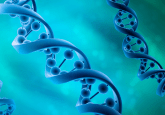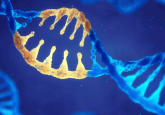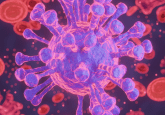Bioanalytical considerations for gene and cell therapeutic products

Gene and cell therapies carry the potential to offer innovative treatments for diseases ranging from cancer to genetic deficiencies. But with that potential for innovation needs new bioanalytical considerations for clinical testing of gene and cell therapies.
A quality laboratory testing partner or subject matter expert (SME) can help biopharmaceutical developers address the unique challenges of bioanalytical testing for gene and cell therapy products. A laboratory partner can also help drive innovation to keep drug development projects on track as they move toward regulatory approval.
What are gene and cell therapeutic products?
Gene and cell therapeutic products use viral vectors or non-viral vectors to alter genes or attack cancer cells. Gene therapies fall under three classifications: gene correction, gene editing and oncolytic virus therapies. Cell therapies comprise adoptive cell therapy and stem cell therapy.
Gene correction introduces an exogenous gene into the human body to correct a mutant or missing gene. It can be further dissected into an integrated vector and non-integrated vector therapies. Integrated vector therapies are created with virus vectors such as lentivirus or retrovirus vectors. Such viral therapeutic products are replication-incompetent, meaning they can infect the host cell but cannot generate next-generation viral particles. Non-integrated vectors may use adeno-associated virus (AAV) or herpes virus and will dilute progressively in proliferating cells.
Gene editing uses CRISPR-CAS9 (clustered regularly interspaced short palindromic repeats associated protein 9) to edit genes in two ways: gene knockout and gene correction to a different subgroup. Gene knockout prevents the expression of specific genes, rendering them nonfunctional. Gene correction to a different subgroup corrects the gene malfunction due to gene mutations.
Oncolytic virus therapies use a modified virus to attack liquid cancers and solid tumors. Adoptive cell therapies use one of three methods—tumor-infiltrating lymphocytes (TIL), gene-modified T cells expressing novel T cell receptors (TCR) or chimeric antigen receptors (CAR)—to modify the immune system to carry out attack liquid or solid tumor cancer cells. Stem cell therapies operate similarly but are autologous, i.e., they do not require a sample from the patient. By base complementary matching principles, oligonucleotide could manipulate gene transcription, splicing, translation and degradation—thus treating diseases in a gene-regulating way.
When evaluated as a whole, gene correction, gene editing and oncolytic virus therapies open countless doors to treat or cure previously undruggable conditions.
Bioanalysis testing requirements for clinical trials
Gene and cell therapy clinical trials have different kinds of bioanalysis requirements including safety tests, pharmacokinetics (PK), immunogenicity, pharmacodynamic (PD) biomarkers and inclusion/exclusion tests.
Safety tests may include hematology, urinalysis, biochemistry, replication-competent retrovirus (RCR) testing and replication-competent lentivirus (RCL) testing. PK analysis includes distribution, CAR-T vector copy number, gene therapy viral genome titer, vector shading analysis, etc. Oncolytic and oligonucleotide products also require PK analysis. Clinical impact, cut-point determination, pre-existing antibodies, drug tolerance and other factors should be considered for immunogenicity analysis. PD biomarkers related with efficacy and safety are often evaluated. Inclusion/exclusion testing evaluates for efficacy based on patient age, race, weight and health status, as well as infectious disease exclusion and diagnostic testing at the molecular level.
PCR strategies
Inside gene therapy drugs, there are transgenes containing nucleic acid. qPCR and droplet digital PCR (ddPCR) methods were developed for analysis, but there are currently no regulatory guidelines for ddPCR validation in the field. Minimum Information for Publication of Quantitative Real-Time PCR experiments (MIQE) guidelines suggests that qPCR assessment parameters should include PCR efficiency, linearity, sensitivity, specificity, accuracy and precision. Furthermore, the 2020 WRIB white paper provides additional recommendations, including a gDNA sensitivity of 50 copies per microgram.
For mRNA determination, RT-PCR is conducted to reverse transcript the mRNA into cDNA and is followed by qPCR; ddPCR is an endpoint technique. A particular instrument is required to generate PCR reaction solution droplets, which ideally contain one gene template each. After PCR reaction, droplets showing fluorescent signals can be counted as positive droplets and used to determine the viral vector concentration. To apply qPCR or ddPCR to human samples (typically blood serum, liver, lung, urine, stool and swab) DNA and RNA must be extracted manually or automatically.
Bioanalytical considerations
The unique nature of gene and cell therapy products requires greater care and advanced techniques for PK, immunogenicity and PD biomarker analysis.
After the infusion of gene therapy products, the viral vector genome titer and non-viral vector concentration should be tested for PK analysis. Standard sample preparation must also be addressed. This can be done via plasmid-containing transgene, viral particle, or a commercial viral standard.
The concentration of transgene products and PD/biomarkers should also be studied for efficacy and safety considerations. Soluble protein PD/biomarkers could be examined by MSD, ELISA or SIMOA and transgene mRNA can be evaluated by RT-PCR/qPCR or ddPCR. Cellular biomarkers such as CD19, CD20, CD3 or CD4 are analyzed by flow cytometry and solid tumor biomarkers may be tested by immunohistochemistry (IHC).
The method validation of PD/biomarker is considered to be a fit-for-purpose validation. A PD biomarker assay should be fully validated for decision-making purposes, but a low-level assay qualification may be acceptable for exploratory purposes. Full validation includes parameters such as accuracy, precision, sensitivity, selectivity, dilution, linearity, stability, etc.
Immunogenicity testing in gene and cell therapy is critical to understand the complete profile of immunogenicity risk and to controlling unwanted cellular and humoral responses. The virus protein should be closely examined for immunogenicity analysis, especially the nucleocapsid protein and the transgene protein. Humoral immunogenicity can be assessed for ADA using ELISA or MSD and NAb testing using cell or non-cell-based assays. AAV products may produce a cellular immune response, and further immunogenicity testing may be required for safety and efficacy. Cellular immunity in gene therapy can be assessed with ELISpot using PBMCs and Flow cytometry using immune cells.
Pharmacokinetic (PK) bioanalysis of CAR-T therapeutic products is required to evaluate VCN (vector copy number and DNA) and CAR-T cell numbers. Vector copy numbers may be analyzed by using qPCR and ddPCR-based methods; a flow-based approach may be used for cell numbers. CAR-T VCN could be determined by qPCR assays with a sensitivity of ≤50 copy/µg gDNA and this assay was usually validated for accuracy, precision, sensitivity, selectivity, specificity, robustness, stability and so on. Anti-drug antibodies of CAR-T products may be analyzed with LBA assay to check ScFv region, which is the extra-cellular domain of CAR-T products. CAR-T ADA analysis can be also performed using a flow-based assay with engineered CAR-T mimicking cells.
Humoral immunogenicity testing evaluates the anti-drug antibody and the neutralizing antibody. Cellular immunogenicity examines the activities of cell immune response. This can significantly affect drug existence and efficacy and should be evaluated during clinical trials. Enzyme-linked immune absorbent spot (ELISpot) is a powerful technique for cellular immunogenicity analysis.
A final word
Gene and cell therapies offer a new horizon for drug developers to create treatments for previously undruggable diseases and genetic conditions. With this opportunity, however, comes nuanced bioanalytical considerations. In many cases, regulations lag behind biopharmaceutical advancements. Working with a quality laboratory testing partner can help drug developers anticipate unique considerations with regard to safety tests, pharmacokinetics (PK), immunogenicity, pharmacodynamic (PD) biomarkers and inclusion/exclusion tests—and develop innovative solutions for each.
In association with:

As a global company with operations across Asia, Europe, and North America, WuXi AppTec provides a broad portfolio of R&D and manufacturing services that enable the pharmaceutical and healthcare industry around the world to advance discoveries and deliver groundbreaking treatments to patients. Through its unique business models, WuXi AppTec’s integrated, end-to-end services include chemistry drug CRDMO (Contract Research, Development and Manufacturing Organization), biology discovery, preclinical testing and clinical research services, and cell and gene therapies CTDMO (Contract Testing, Development and Manufacturing Organization), helping customers improve the productivity of advancing healthcare products through cost-effective and efficient solutions. WuXi AppTec received AA ESG rating from MSCI in 2022 and its open-access platform is enabling more than 5,900 customers from over 30 countries to improve the health of those in need – and to realize the vision that “every drug can be made and every disease can be treated.”
Our expert opinion collection provides you with in-depth articles written by authors from across the field of bioanalysis. Our expert opinions are perfect for those wanting a comprehensive, written review of a topic or looking for perspective pieces from our regular contributors.
See an article that catches your eye? Read any of our Expert Opinions for free.






